No aircraft, no escorts, no kettles. How much truth can be found in the many myths surrounding HMS Queen Elizabeth and her sister HMS Prince of Wales?
There are scores of myths, rumours and outright nonsense circulating on the internet and even in newspapers about the new Queen Elizabeth class aircraft carriers. We spend a lot of time pointing out these myths, writing articles about them and directing people to the different articles in an attempt to set the record straight. One of our readers recently asked, ‘Why not just write one article covering the myths?’, so we have.
There’s simply not enough time to discuss or counter everyone of the myths about these vessels so let’s take a look at the most common and resilient myths surrounding HMS Queen Elizabeth and her sister HMS Prince of Wales.
If there’s anything we’ve missed, please let us know!
1. ‘The carriers will not have any aircraft’.
This one even gets repeated by politicians, many of you will be aware of our Twitter campaign to correct this claim across the political spectrum. Claims the carrier will not have any aircraft are simply incorrect.
Merlin helicopters were the first aircraft to begin flying from HMS Queen Elizabeth and they will soon be followed by F-35 jets in September this year.
In order to prepare for operating from HMS Queen Elizabeth, Royal Navy sailors have also trained alongside their US Navy counterparts on the flight deck of the amphibious assault ship USS Wasp. Recent F-35 trials aboard the USS Wasp weren’t just an operational test for the United States Marine Corps, with much of the data produced being used to inform the USMC’s declaration of initial operating capability but also for the United Kingdom.
UK personnel were fully embedded in the USS Wasp trials and will use the data gathered from this event, future trials and operational deployments to support the UK’s flying trials aboard HMS Queen Elizabeth off the US coast in a few months.
British F-35 pilots also recently embarked on the USS America for at-sea developmental testing phase 3 (known as DT), the last trial that paves the way for the US Marine Corps to deploy the jet operationally on amphibious assault ships.
BAE Systems test pilot Pete Wilson said about the upcoming trials on the HMS Queen Elizabeth:
“This will not be a DT phase. Testing on the Queen Elizabeth will be like DTs 1, 2 and 3 combined. We don’t need to use fully instrumented aircraft; we already understand most of the loads on the aircraft systems, as we have tested that during earlier tests.”

The term now used for the carriers embarked squadrons is ‘Carrier Air Wing’ (CVW). The vessels are capable of deploying a variety of aircraft in large numbers, up to a maximum in the upper fifties in surge conditions.
Captain Jerry Kyd, commander of HMS Queen Elizabeth, commented on the initial deployment and the gradual increase in air wing numbers:
“We are constrained by the F-35 buy rate even though that was accelerated in SDSR in 2015, so initial operating capability numbers in 2020 are going to be very modest indeed. We will flesh it out with helicopters, and a lot depends on how many USMC F-35s come on our first deployment in 2021. But by 2023, we are committed to 24 UK jets onboard, and after that it’s too far away to say.”
In 2023, the UK will have 42 F-35 aircraft, with 24 being front-line fighters and the remaining 18 will be used for training (at least 5 on the OCU), be in reserve or in maintenance.
In addition to the joint force of Royal Air Force and Royal Navy F-35Bs and their pilots, the air wing is expected to be composed of a ‘Maritime Force Protection’ package of nine anti-submarine Merlin HM2 and four or five Merlin for airborne early warning; alternatively a ‘Littoral Manoeuvre’ package could include a mix of RAF Chinooks, Army Apaches, Merlin HC4 and Wildcat HM2. The Crowsnest AEW&C aircraft will come from a number of the embarked Merlins (any of which can be fitted with the sensor package), the number again scaling with requirements.
We understand that vessel would still carry at least one F-35 squadron aboard in such circumstances to offer air defence as well as support to the helicopter assault activities.
2. ‘The computer systems run on Windows XP’.
Confusion on this often brought up myth seems to come from the fact former Defence Secretary Michael Fallon didn’t deny the suggestion the vessels used Windows XP after an image of a laptop appearing to use the operating system (OS) surfaced, the only trouble with this is he doesn’t actually seem to know any better. The Queen Elizabeth class run on the Shared Infrastructure operating system.
While I was on-board, a number of monitors displayed the XP boot screen, this has been reported by many to indicate the carrier runs on Windows XP. Now, why is it wrong to say the carriers run on XP?
Simply put, the system is used in the same way Windows RE is used on commercial machines today, as a recovery and maintenance environment. The use of one operating system in the maintenance of another is not uncommon. XP doesn’t run any systems on-board either carrier.
It should be noted that none of these systems that use XP in this manner are vulnerable to outside attack in the same way the NHS and other organisations were hit. Speculation was rife on this very topic two years ago an image of Windows XP was seen on a technicians laptop during a documentary, let’s dig a little deeper shall we?
The earlier rumours seem to have stemmed from a wallpaper on the laptop owned by an engineer that was visible on a recent documentary while the later rumours again seen to have stemmed from a background on a laptop coupled with the Defence Secretary not being particularly knowledgeable on naval operating systems and being unable to comment.
“The MoD can confirm that Windows XP will not be used by any onboard system when the ship becomes operational, this also applies to HMS Prince of Wales.”
This would appear to agree that XP (or rather, a varient of Windows similar to XP) is being used to test and calibrate the systems by contractors prior to operational service.
3. ‘Smaller carriers would have been a better idea’.
Much has been made of the claim two or three smaller ships would be cheaper or more effective than two large carriers but is this really true? The two Queen Elizabeth class carriers can accommodate around twice as many aircraft as the three Invincible class. This metric isn’t the primary advantage of a larger ship class as each F-35B is considerably larger than a Harrier and has much better performance.
There’s very little reason not to build larger carriers, it was once estimated that steel accounted for only about 20 percent of the cost of the ship.
The smaller the carrier, the fewer aircraft it can support and the greater waste of resources it becomes when compared to larger carriers. The smaller the carrier, the more the vessels size restricts the performance of the aircraft onboard. The three Invincible class carriers, which the Queen Elizabeth class will replace, operated small and relatively low performance Sea Harriers. The larger F-35 that will operate from the new carriers is more effective than the Sea Harrier. It carries much more and it flies much faster and much farther. It’s also a more complicated aircraft, requiring more equipment and personnel.
A carrier accommodating as many F-35Bs as the Invincible accommodated Sea Harriers would be far larger by necessity in order to effectively operate the modern, larger aircraft.
The ships former commanding officer, Captain Simon Petitt, rightfully pointed out that there is a lot of symbolism in modern warfare and that having a ship the size of HMS Queen Elizabeth, which will be the navy’s biggest ever, was significant. The sight of a heavily equipped 70,000 tonne carrier, which is almost 300 metres long, heading towards a potential enemy had a deterrent effect that is essential if the UK wants to project influence across the world Petitt claims.
“It is massively visible, you can range back in history and see the value of this. Everything from Nelson deterring Admiral Villeneuve from leaving Cadiz all the way to the big battleships of early 20th century, to what we are doing now. The Americans use it all the time. We currently haven’t got this level of carrier capability. The bigger the capability the more influence you have to bear.”
So great is the impact of larger vessels as a deterrent, they’re often used as a geopolitical chess piece. American governments have, since the second world war, moved aircraft carriers around to demonstrate American resolve.
The particular benefits of using carriers in this way are that they operate on the high seas, where permission is not needed from other countries. Indeed, since modern US carriers are large and imposing they “show the flag” to great effect due to their sheer size alone. Equally, it is often argued that had the Royal Navy had two full sized carriers in 1982 it is more than possible that Argentina would not have attempted to take the Falklands in the first place. Larger carriers don’t have to be packed to bursting point with aircraft to achieve their greatest effectiveness, even with fewer aircraft on board, a ship with a large flight deck can rearm and refuel aircraft much more quickly, this is typically why they allow for much higher sortie generation rates than smaller vessels.
The more crowded the flight deck, the slower the turn-around of each aircraft, the lower the sortie generation rate.
Size also offers greater storage capacity, larger vessels do not have to be resupplied as often, impacting both the effectiveness of the carrier and her vulnerability. Because a carrier is more vulnerable when being replenished, the vessel typically withdraws from station for that function. Much of the time lost is the time spent heading away from station and returning. The smaller the carrier, the more time lost and a bigger logistics chain required in support.
A larger ship is likely to survive damage that will sink or disable a smaller one. The smaller the proportion of a ship that gets damaged, the better the chance that the ship can survive the damage and keep on fighting. It takes sheer size to provide enough protection against all the weapons likely to be used against a carrier, from bombs to cruise missiles to torpedoes.
If a complement of aircraft that would typically be found on one large carrier is split among several smaller carriers, then each vessel needs its own escorts unless they operate together. This would require more resources to operate effectively. It might be argued that splitting up a carrier force would make it more difficult for an enemy to deal with all of it at once but the price paid in escorting ships would be high, making it unfeasible for most navies. Indeed, the most significant effect this would have would be requiring more smaller carriers to do the job of one large vessel, further increasing costs. Each of the smaller carriers in the group is less survivable, more wasteful and less effective than a single larger ship.
4. ‘There are no escort ships to protect her’.
It’s fairly obvious that manning and technical issues with the escort fleet have been causing availability problems but there are still 19 escorts in varying states of readiness. A senior Royal Navy officer recently insisted that the Royal Navy has enough warships to protect HMS Queen Elizabeth.
Rear Admiral Burton, Commander UK maritime forces, said:
“We have enough frigates and destroyers to protect that task group. We will use coalition frigates and destroyers, but we have enough to deliver a sovereign task group.
We’re building OPVs as well to deliver some of the capabilities that would otherwise be delivered by frigates and destroyers.
So I’m confident that with the eight Type 26s, the six Type 45s, the OPVs and the Type 31s that are coming online, that will be sufficient to protect the task group and deliver the other responsibilities that the department asks of us.”
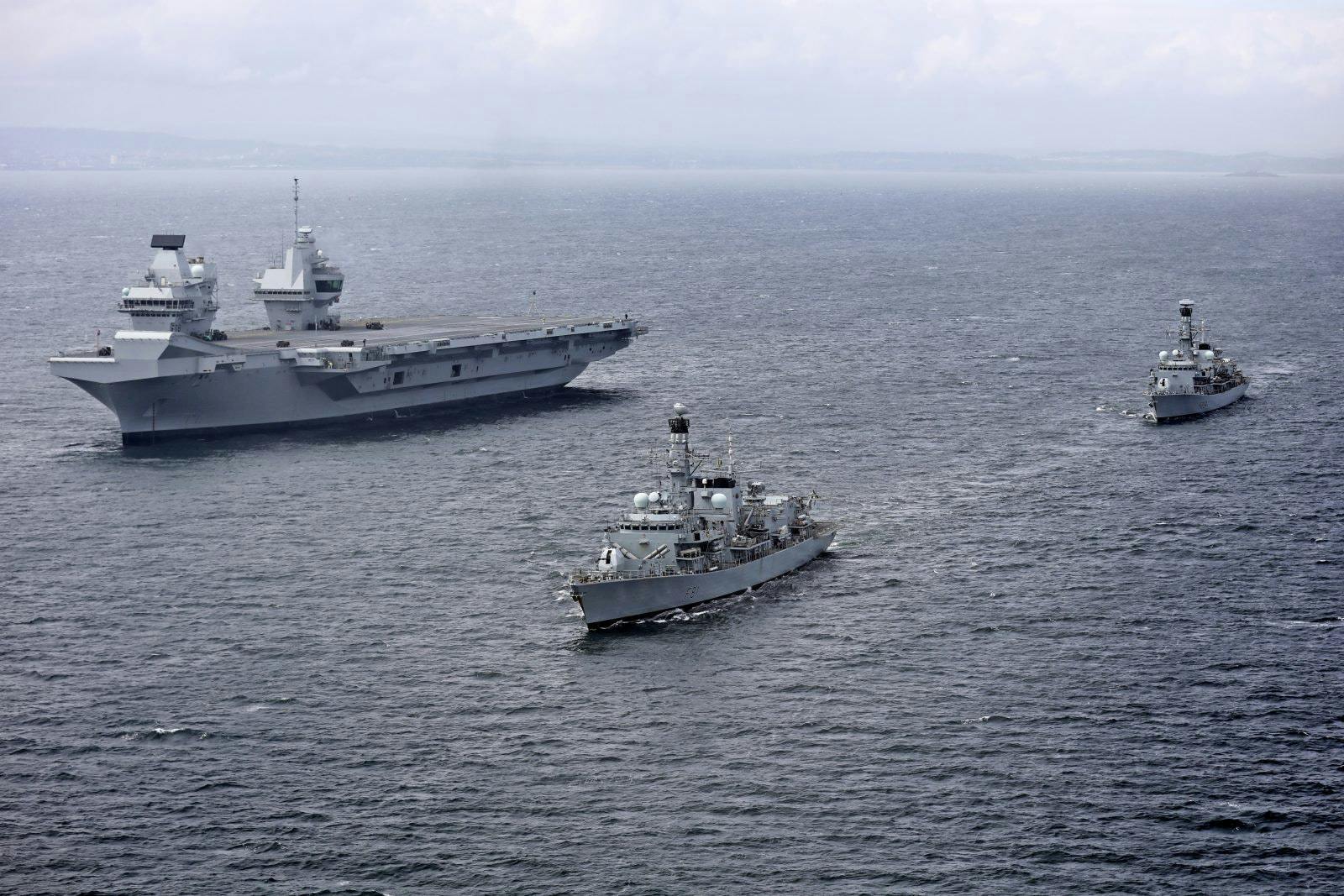
There’s no real doubt the UK will be able to provide enough escorts to sail with HMS Queen Elizabeth should the situation require it, with each deployment sailing with what the Royal Navy believe to be the best fit be it British vessels or a mix of British and allied ships.
5. ‘One of the ships will be sold/mothballed’.
There are no plans to sell either Queen Elizabeth class ship, zero, nada, zilch. Both ships are also entering service and will both be used, even for trials.
HMS Prince of Wales will take over F-35 trials to allow HMS Queen Elizabeth to return to dock for her routine re-certification work. Former Captain of the vessel Ian Groom told media that HMS Prince of Wales will need to be delivered during 2019 to allow flight trails to continue whilst Queen Elizabeth is undergoing inspection in dry dock. HMS Prince of Wales is currently on track for float out and to start sea trials in mid-2019.
Quoted in Janes, Groom said:
“There is a further set of fixed-wing flying trials needed and HMS Prince of Wales has to carry them out. HMS Queen Elizabeth’s re-certification period in 2019 means we need HMS Prince of Wales then.”
The builders are already applying lessons from including improvements to the process of preparing its heat-resistant flight deck and installing an improved F-35 landing light systems earlier in the build process. Both vessels, clearly, will be entering service and covering each others refits, maintenance and work up periods.
6. ‘The Americans will be the first to use HMS Queen Elizabeth’.
Recently, the Ministry of Defence confirmed plans for the deployment of American F-35 aircraft alongside British jets aboard HMS Queen Elizabeth. However the important thing here is to remember that the US jets will augment the British jets. Not replace them and not operate from them alone.
Squadron Leader Andy Edgell is currently testing F-35 jets in the United States ahead of their trials on HMS Queen Elizabeth next year. He will be the first to fly from the vessel in an F-35.
“She’s marvellous. She has an incredible amount of thrust but it’s more than just brawn that makes her so fantastic to fly – it’s the brains behind her as well. She’s a masterful piece of engineering and it makes her so effortless to fly. It’s impossible not to be exhilarated every time. She’s a beast when you want her to be and tame when you need her to be. She’s beautiful.
The launch of the F35s from the HMS Queen Elizabeth is a once in a generation historical event. To be the first to fly off the carrier, to have a front row seat, would be an absolute privilege. It wouldn’t just be about the pilot – there are hundreds of people who have been working tirelessly behind the scenes to make this happen and the honour will be theirs too.”

There are already 150 UK personnel out in the US working with the state-of-the-art jets, and the latest course of UK pilots have just finished their ground school training and are now ready to fly the F-35B at Marine Corps Air Station Beaufort in South Carolina.
It is understood that the US aircraft will augment British jets on coalition operations, not replace them and not be the first to fly from the new carriers.
7. ‘The F-35 jets themselves are American’.
The F-35 features a significant amount of British developed components in addition to the 15% of every jet sold globally physically being built in Britain. It’s a multinational effort.
As the only Level 1 partner, the United Kingdom has garnered tremendous economic benefits from the F-35. British industry will build 15% of each of the more than 3,000 planned F-35s, in addition to a large volume of British developed aircraft systems including the electronic warfare suite. Some estimates put the jet at 30% British developed (not built) content. The programme at peak will generate significant export revenue and GDP growth. The programme is projected to create and support more than 25,000 jobs across every region of the United Kingdom. Hundreds of British software engineers with BAE have played a leading role in creating software for the F-35 aircraft that will be operational with the US Air Force later this year.
The software team at the BAE site in Samlesbury, Lancashire, has worked alongside Lockheed Martin, the prime contractor on the F-35 programme, to deliver the latest update known as ‘Block 3i’. There are more than eight million lines of code required for full operational capability. Block 3i equips the aircraft with 89% of the software code required.

UK Paveway IV & ASRAAM.
John Brindle, principal engineer for F-35 Lightning II Development, said:
“Beginning with Jaguar, BAE Systems has a long history and world-class expertise in developing software for aircraft systems. We have made a significant contribution to 3i, including producing software for the fuel management system, on-board vehicle systems, structural health management and elements of the navigation and cockpit display system.”
According to Lockheed Martin:
“The fingerprints of British ingenuity can be found on dozens of the aircrafts key components. BAE Systems, GE Aviation, Martin-Baker, SELEX, Cobham, Ultra Electronics, UTC Actuation Systems and Rolls-Royce are just a few of the more than 100 U.K.-based suppliers for the programme.”
UK industry will provide approximately 15% of the value of each F-35 to be built, more than 3,000, worth some £1 billon and generating around 25,000 British jobs. Some have even said the F-35B features more British content than Harrier Gr9.
8. ‘The ships were only built to benefit Scottish yards and have no strategic purpose’.
There were 3,000 people in Rosyth, with another 8,000 people working at sites around Scotland, England, Wales and Northern Ireland were involved in everything from building segments of the hull to parts of the systems installed on the ships. Then there’s the wider supply chain network, involving hundreds of companies around the UK. In short, the jobs created and the effort going into this new British built icon are unprecedented for a single project in the 21st century.
The origins of the massive and sometimes controversial Queen Elizabeth class carrier programme lie in the 1998 Strategic Defence Review.
The review re-evaluated every weapon system (active or in procurement) with the exception of the Eurofighter Typhoon and the Vanguard-class ballistic missile submarines.

The report identified that aircraft carriers offered the following:
- Ability to operate offensive aircraft abroad when foreign basing may be denied.
- All required space and infrastructure; where foreign bases are available they are not always available early in a conflict and infrastructure is often lacking.
- A coercive and deterrent effect when deployed to a trouble spot.
The report concluded:
“The emphasis is now on increased offensive air power, and an ability to operate the largest possible range of aircraft in the widest possible range of roles.
When the current carrier force reaches the end of its planned life, we plan to replace it with two larger vessels.”
In November 2004, while giving evidence to the House of Commons Defence Committee, First Sea Lord Admiral Sir Alan West explained that the sortie rate and interoperability with the United States Navy were factors in deciding on the size of the carriers and the composition of the carriers’ air-wings:
“The reason that we have arrived at what we have arrived at is because to do the initial strike package, that deep strike package, we have done really quite detailed calculations and we have come out with the figure of 36 joint strike fighters, and that is what has driven the size of it, and that is to be able to deliver the weight of effort that you need for these operations that we are planning in the future.”
9. ‘Nuclear power would have been better’.
Cost is single-handedly the most prohibitive reason the Queen Elizabeth class are not nuclear powered. More conservative estimates say a reactor adds 280% to the lifetime costs of a ship.
Aircraft carriers typically only carry a month’s worth of aviation fuel, including US and French nuclear vessels, so need to be refuelled monthly anyway. There’s no real operational advantage to having the vessels nuclear powered, especially when weighed against the massive increase in costs.

Tide Class tankers, of which RFA Tidespring is the first, are replacing the RFA’s current, ageing single-hulled tankers.
A reactor requires specialist nuclear personnel, and facilities, that are expensive to acquire and maintain. While generators, and turbines require much easier and cheaper to train personnel.
Somewhat understandably given the overwhelming public and news media reaction to the slightest of cost increases, the MoD decided not to use nuclear propulsion because of its high cost and has chosen a propulsion system based on Rolls-Royce’s integrated electric propulsion system.
The propulsion system will consist of two Rolls-Royce Marine 36MW MT30 gas turbine alternators, providing over 70MW and four diesel engines providing approximately 40MW, with the total installed power approaching 110MW.
For more on why nuclear power doesn’t make much sense for the new carriers, I fully recommend ‘The reasons HMS Queen Elizabeth is not nuclear powered‘ by savetheroyalnavy.org.
10. ‘She is named after the current Queen Elizabeth’.
The name HMS Queen Elizabeth is a continuation of an historic Royal Navy name dating back over a century and the vessel herself is not named after the current monarch.

10. ‘She is leaking!’.
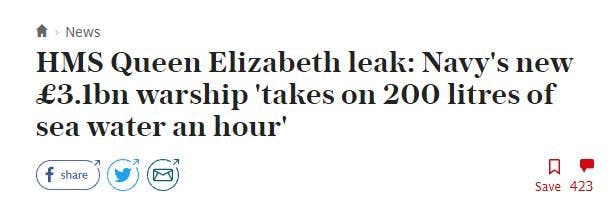 Issues like this occur often on vessels of all types, especially during a phase of their life designed to identify and rectify faults. A minor leak on a ship is not a serious concern, in fact it’s very common. This happened during the ships sea trials, a stage of her life designed to find and resolve issues.
Issues like this occur often on vessels of all types, especially during a phase of their life designed to identify and rectify faults. A minor leak on a ship is not a serious concern, in fact it’s very common. This happened during the ships sea trials, a stage of her life designed to find and resolve issues.
While some argue that this is a major issue it should be noted that the Royal Navy themselves seemed confident that it would not impact the schedule of the vessel and they were correct. We spoke to someone serving on board the vessel via e-mail, he told us under the condition of anonymity:
“We’re bemused, nothing more nothing less. This so called issue isn’t a new thing and it’s not what I would call serious. It’s getting fixed shortly. Most of us on board don’t care or don’t know about it it’s such a trivial matter. We’re not ‘sinking’ and we’re not ‘leaking’ anymore than any vessel would be. It’s disappointing to see how easily this has been blown out of proportion.”
A Royal Navy spokesman said:
“An issue with a shaft seal has been identified during HMS Queen Elizabeth’s sea trials; this is scheduled for repair while she is alongside at Portsmouth. It does not prevent her from sailing again and her sea trials programme will not be affected.”
The Sun says that HMS Queen Elizabeth has been taking on up to 200 litres of sea water every hour.
“A faulty seal around one of the vast warship’s propeller shafts means 200 litres of sea water pour in every hour.”
A typical bilge pump even on a narrow boat, by the way, can handle over 1000 litres per hour.
Admiral Chris Parry told Sky News the leak was a non-issue:
“Every ship, to tell you the truth, takes on water that’s why you have pumps. What people have to realise is the whole reason for sea trials is that you race and rally the ship, you stress it right to its extremes, and you’re really looking for faults like this to see what happens.
You get this all the time, you’ve got very complicated engineering under the water, it’s operating obviously at sea and every yachtsman will tell you they take in water somewhere, that’s what you’ve got pumps for, that’s why you have dedicated engineers, it really is no big deal I have to tell you.”

The ThinPinstripedLine response to the story about the ‘leak’ can be found here and summarises today’s events very well.
“The issue affecting QUEEN ELIZABETH seems extremely minor, easily fixable and not remotely in the same league of problems that other ships have had. It is a testament to the quality of British shipbuilding skill, and the strength of the CVF design that she has come through trials with only very minor problems.
The battle for the Royal Navy though is pushing this narrative against a media determined to make a minor technical problem into a major PR disaster for the Navy. In the public mindset the front page news today will help set the narrative for the ships early life, regardless of how utterly untrue it is.
Part of this stems from a lack of understanding on the purpose of sea trials, or that faults will occur, but that they are easily fixable. It also stems from the problem that as papers have scrapped their specialist journalists, the days when deep experts like Desmond Wettern could be relied on to provide deep knowledge and understanding, spotting when an issue was a non-event, or equally when what the RN wanted to make out was a non-event was actually a scoop are long gone.”
The shaft seal issue was identified during trials and seemingly was not deemed serious enough to delay subsequent activities. While obviously this is an issue, it’s not a major issue as the 200 litres an hour will easily be handled by the ships pumps until the issue is resolved, which it will be before she sails. To put it in perspective, that’s around two bath tubs of water.


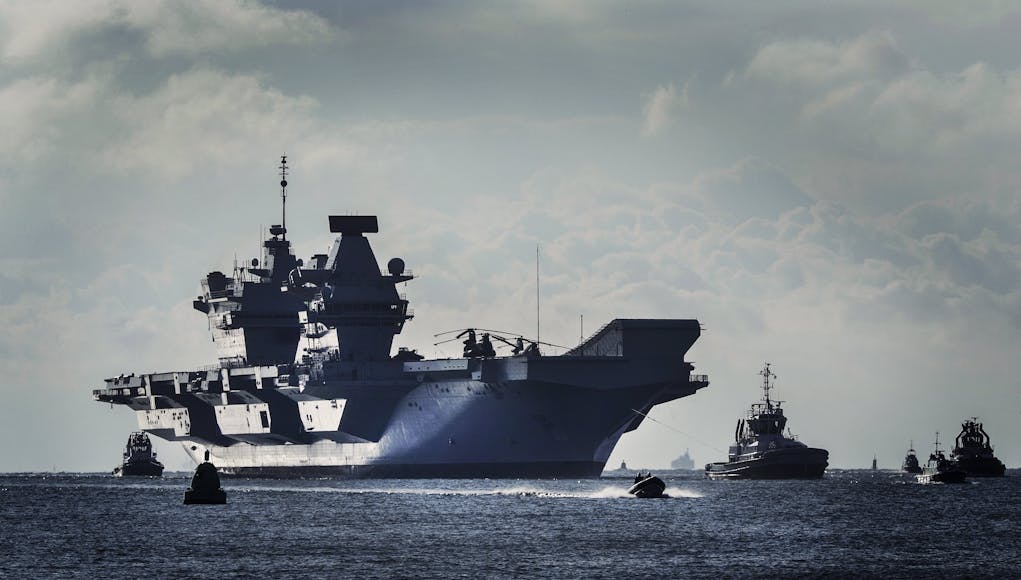



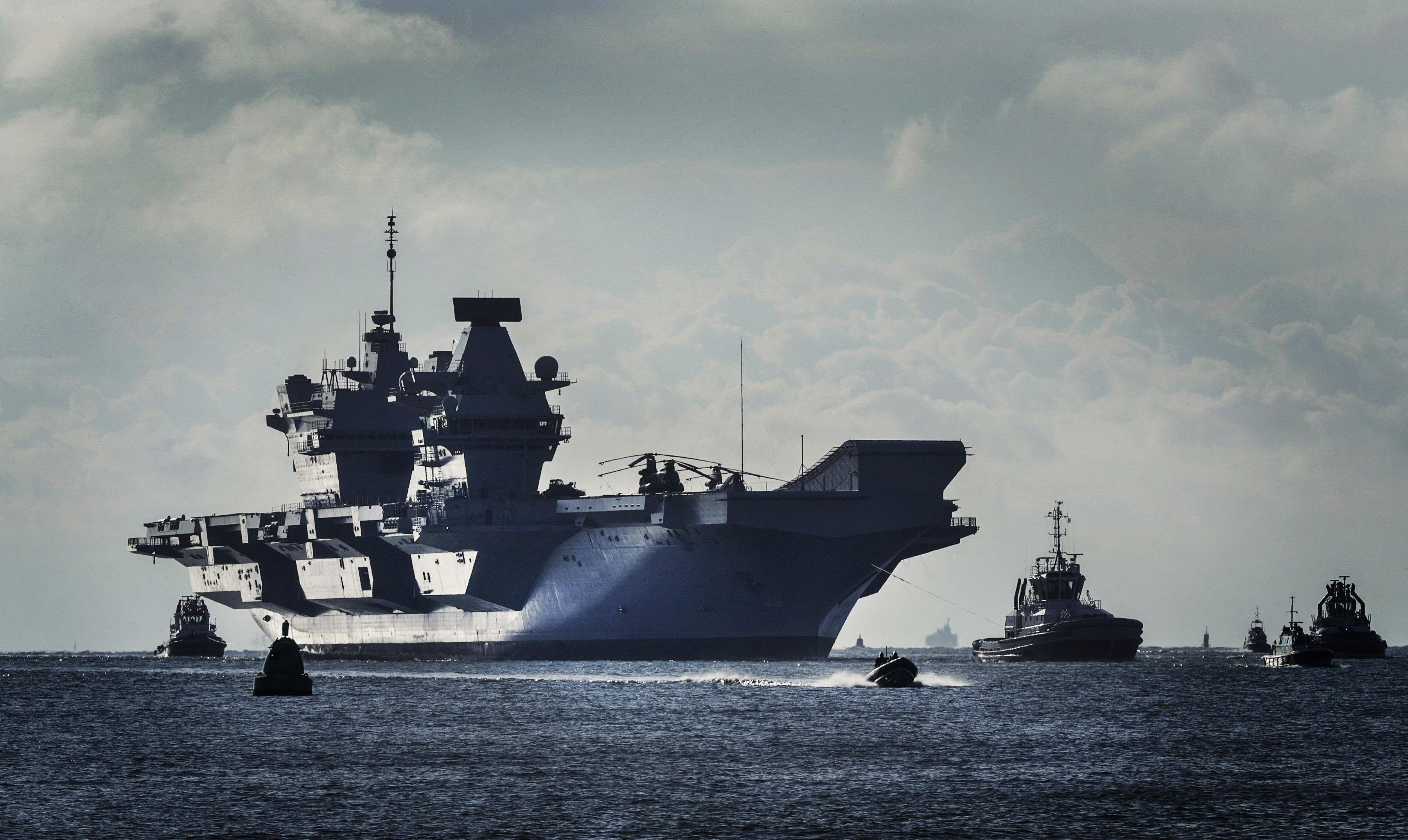
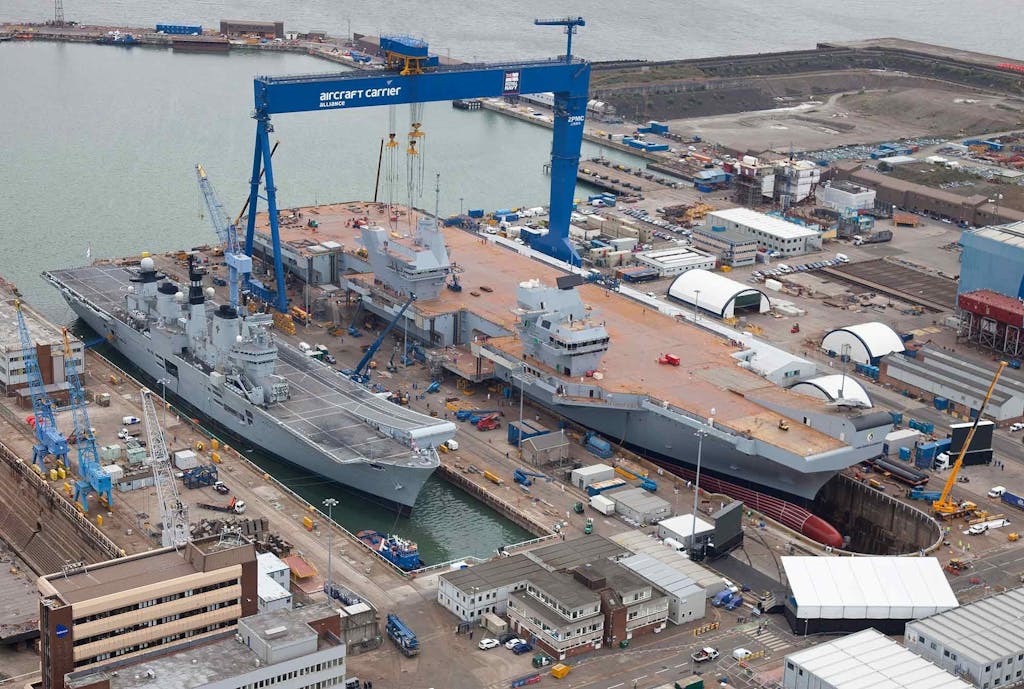
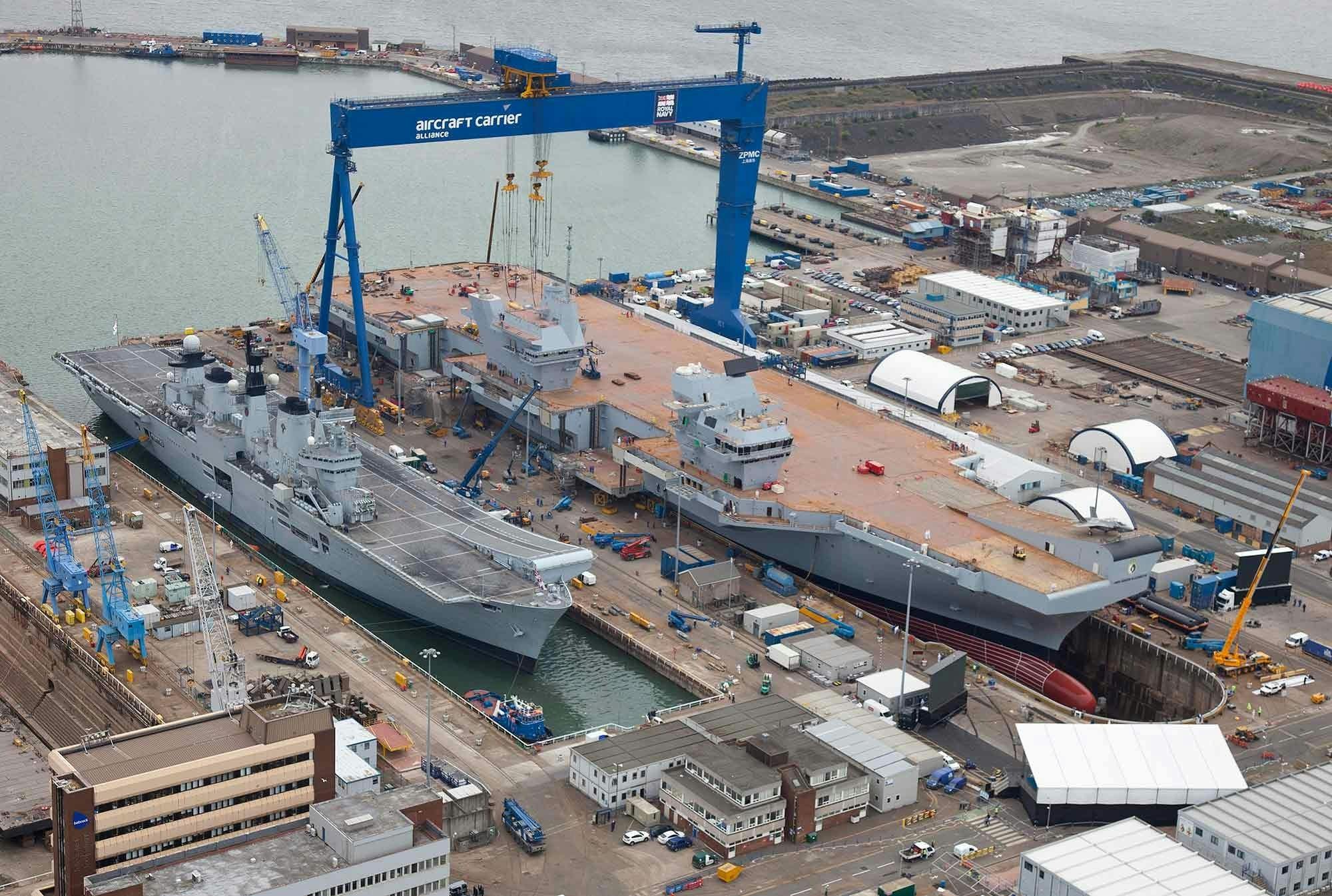
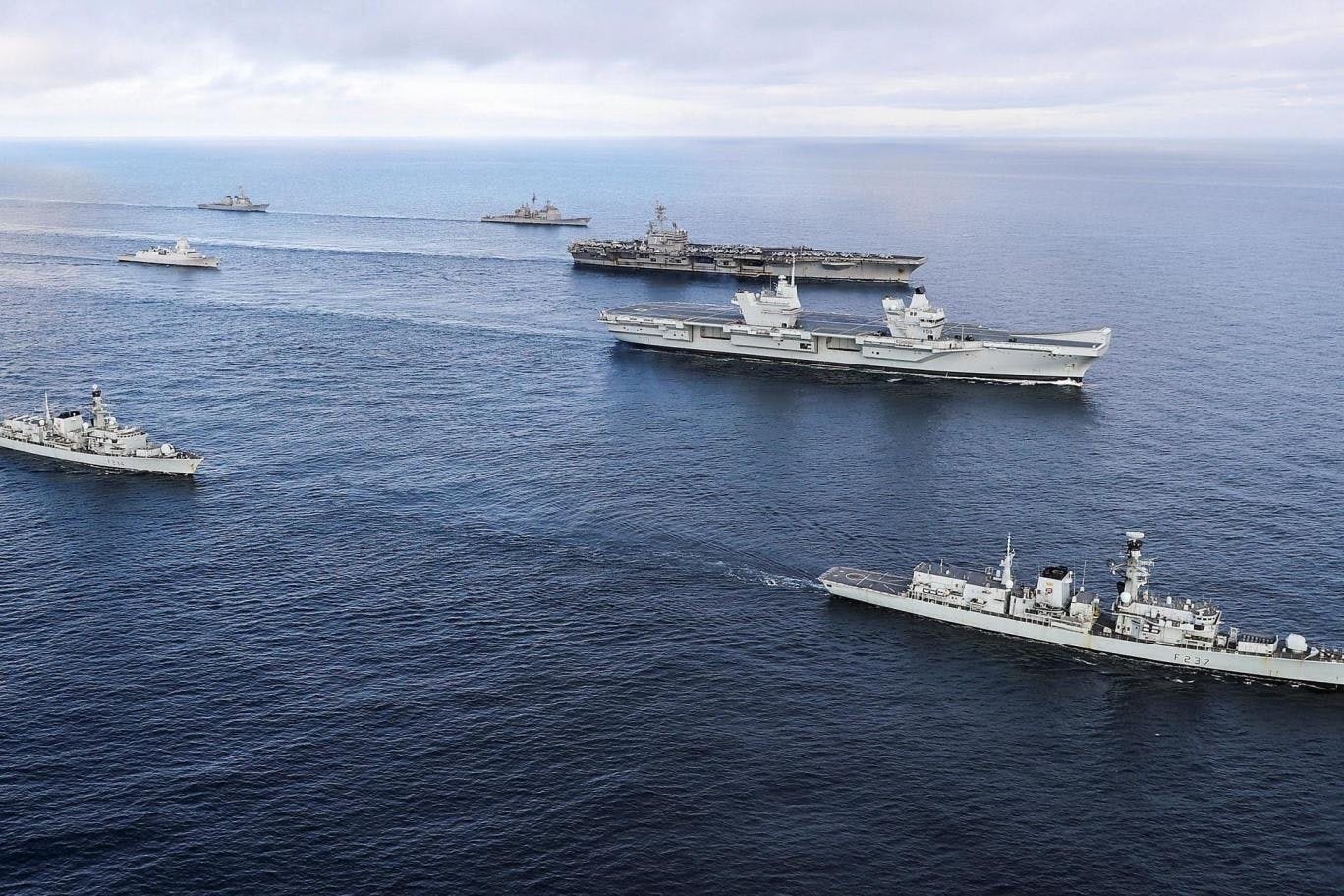

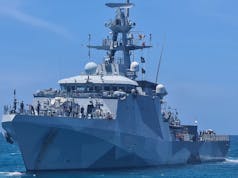
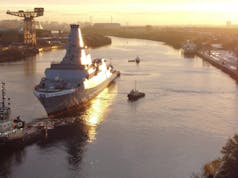
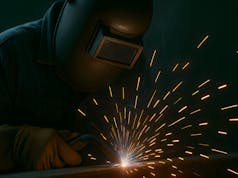
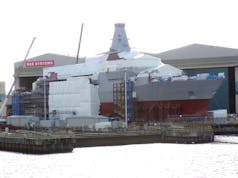




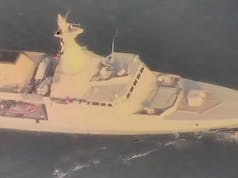

Excellent article thank you. Unfortunately it will be read by users of this site but no-one else. The degree of ignorance among journalists and politicians is often both amusing and alarming. I can remember vividly before the invasion of Iraq a serious news presenter asking about likely casualties which would result from our ‘carpet bombing’ of Baghdad ala Dresden etc. In a way I sympathise it must be difficult to explain a complex subject in 75 seconds or 200 words but it would be nice if more of them tried.
I agree it won’t do much good – except as a reference for us when trying to kick myths in the butt. I replied to a posting full of rubbish, with “facts” that were basically not even from here, but from the RN and the 1SL – and they guy came back and put the same sort of rubbish, including that the Type 32 would be used to escort the QEs because it’s cheaper and there would be no more T26.
I’m looking forward to recviewing the specs for these T32s.
Also agree with the article saying Fallon not having been any good at replying to these myths, couldn’t he just have got himself a hot line to the 1SL or, basically, anyone with a bit of cop-on?
Ah well, looking forward to the next Russian carrier being “discovered” by a fishing boat, jet-skier, private drone flyer or bird-watcher, attacking the Moray coastline, and the news having reached the defence minister by carrier pigeon.
The nuclear one is the one you see parroted most by Americans.
‘Yeah but it’s not nuclear powered so it’s a s**t aircraft carrier.’
Not for the fact that being nuclear powered brings no great advantages as shown by this article. Not having to refuel means nothing when the escort ships have to turn into refuel, nor when you have to return to port for other supplies for the carrier itself such as aviation fuel, food and other such items. That in itself would be problematic as quite a few strategically located counties have banned nuclear powered ships. And on top of all that, of it’s breached in combat it would be lethal to the environment and surrounding ships.
In fact if like it if someone could explain to me what advantage it brings that outways the cons that would be great, Because it seems to me that tens, If not hundreds of millions have been wasted on a vanity project simply so they could slap ‘nuclear powered’ on the side.
Port visits to show the flag will be an important part of peacetime operations. As there are many nations around the world that do not allow nuclear powered vessels to enter their ports, being conventionally powered will be an advantage.
Good point. The Americans have rather created a rod for their own back here. The nuclear option was decided back in the 60s when it was seen as the pinnacle of power and the future. If they were to go back to anything less it would be seen as a capitulation from their role of World Superpower. So logic as to whether its best or otherwise will, unless a new replacement super futuristic option becomes available that they can sell to the nation, be irrelevant.
The only real benefit I can think of, is the amount of surplus electrical power a Nuclear powered ship can generate. This will be more beneficial in the future when the aircraft’s catapults are Electro-magnetic and not steam. Close In Weapon Systems (CIWS) like Goalkeeper and Phalanx will be replaced by Laser. However, Lasers are terribly inefficient and require a vast amount of power to generate a useful wattage. For the weapon to have any useful effect on the target, the laser must be able to put at least 15MW of energy on to the target, hopefully at least a kilometre away (further the better)! The idea being it either blinds the threat or burns through and destroys what ever is inside the body of the incoming threat. The other future weapon system, the rail gun, also devours enormous amounts of energy to fire its hyper sonic slugs. Most ships, will not have the surplus electrical power necessary to power a rail gun, let alone a number of laser powered CIWS.
The current Phalanx has one ace up its sleeve, in that it can hit, deflect or destroy kinetic threats. The land based system as seen in Iraq, successfully intercepted both unguided surface to surface rockets as well as mortars, not sure a laser would have so successful!
There are both pros and cons for conventionally powered ships over nuclear. But the main benefit would be cost. I’d put money on that says if BAE Systems offered the ship to be nuclear powered for the same price as a conventional one the RN would have bitten their hand off!
There may be a speed advantage with US carriers using conventional steam propulsion
Yep the US carriers are lightning fast 40kts or so. But we would have the same problem as with our SSNs. What to do with all the nuclear material when they’re decommisioned.
No US carrier now or in the past can hit 40 knots.
That’s the preserve of Tom Clancy fiction.
Nuclear power does not make a ship faster, the nuclear reactor is basically a big kettle that heats water into steam. The steam is then used in steam turbines,just like warships have used for the last 100+ years. The latest reactors in the Ford Class generate electricity for electric motors but they’re still not that fast.
The speed of a ship is dependent on its displacement, hull form and installed power. The calculations to work this out is basic naval architecture.
So…the actual top speed of a US nuclear powered carrier is very easy to work out. The Nimitz Class top speed is actually 31.5 knots, the Gerald R Ford will also be 31.5 knots. The fastest US nuclear carrier was actually the USS Enterprise, her max speed was 33.5 knots.
The fastest US Navy Carrier’s ever were actually the conventionally powered Forrestal Class from the late 50’s, early 60’s. They could actually hit 34 knots. It’s worthwhile noting that the WW2 Essex Class were faster than the nuclear powered Nimitz and GRF Class carriers of today.
As to the Queen Elizabeth Class. For years we were told that the maximum speed is 25 knots. That is in fact her designed contractual minimum top speed, at the end of her service life (50 years), with worn machinery, dirty hull and all weight growth margin used up.
In reality HMS Queen Elizabeth hit 29.5 knots on her second day of sea trials. At that point her AIS tracking was switched off as she went faster. Interviews with the design team in the The Engineer have indicated that her true top speed is 32 knots+.
And that would make her the fastest carrier in the world….faster than any nuclear powered carrier…
A vessels speed is dictated by its waterline length. We could have say another 20,000HP from a nuclear plant but how much of that could realistically be converted into thrust at the prop? I would say that the whole system is optimised and 25knts not only gives it the ability to do 6oo miles a day if required, it will ensure the Type 45’s etc can stay with it as well. The net uplift of say 15 knots flat out with a potential nuclear powerplant giving say another 300 daily miles is redundant when none of the CV fleet can keep up with her and an F35 can do that 300 miles in say 10 minutes.
One advantage that nuclear power gives is plenty of available steam, without the need for supplemental boilers. That steam can then be used to run the catapults. In a post EMALS world that advantage is negated but nuclear power still gives you more electrical power, which *may* prove to be an advantage in the future.
Lewis – Well said. And no one ever discusses the costs of de-commissioning a nuclear carrier and the huge facilities tide up doing it. The UK decided in the ’60 there was no strategic or tactical advantage let alone the huge extra cost to a nuclear powered surface ship. Especially not a Carrier given it is highly dependent on its accompanying conventionally powered Carrier Group of ships. And that decision has been proved correct.
You have to re-victual the crew, restock weapons and refuel the aircraft so adding diesel is no big extra delay. Especially as every accompanying ship will need diesel re-supply! And as for speed well the Groups can only go as fast as the slowest ship.
The US Congress ran a cost comparison of Nuclear vs Conventional carriers and the extra cost was some $8 Bn per ship in 1998 money. Or $12 Bn today. That is Per Ship for its lifetime. Pages 8 & 9 of this source are the key pages:
http://www.gao.gov/archive/1998/ns98001.pdf
This also points out the much higher numbers of crew required and the higher wage cost for those crew given the higher level of expertise needed.
There is also the inescapable truth that with nuclear you pay whether you use the ‘fuel’ or not. With diesel powered gas turbines you do not. And this is even more critical given US Carriers spend some 50% of their lives in port.
And no-one has yet explained where the new Ford Class carrier is 3 times more efficient / effective than the QE Class given it cost some $16 Bn and the QE cost some $5 Bn and it carries 4,500 crew rather than the 1,600 of the QE.
The Nuclear powered option is nothing more than bragging rights. But very expensive rights.
I am no no expert, but I do welcome the 2 new carriers, albeit they will be equipped with a miserly 20-odd attack aircraft and a mixed flight of attack/support choppers. There needs to be a serious rethink about equipping these carriers with the most modern US variants of the US V22 Osprey. Effectively armed with AA or air-ship and/or A/S rescue, etc, surely a flight or two of these supreme aircraft would offer much more operational flexibility to the new CVW? As our hopeless Gov have killed off our RM support vessels, these CVW must also be involved with RM support?
Hmm, any thoughts on Norway’s revelation that their F35s send “sensitive data” back to the US after every flight ? Manufacturer looking after the aircraft, US intel snooping or both ?
But surely with our special relationship the wouldn’t do that to us surely ? LOL
Mostly makes sense. Still not totally convinced about the last one mind. Seems a bit like the fact that the old QE2 wasn’t named after the present monarch (at least until she thought it was). In that case one has to wonder why the ship wasn’t name Queen Mary 2 as it would have had in the time frame precedence (as has happened much more recently) while we are still waiting for a QE3.
As before I think in the present case Queen Elizabeth and Print of Wales allow the best of both worlds to be achieved, denying the obvious and playing the historical card while in the mindset the link is always going to be there as I am sure it will be with the Queen herself. Just because we are told otherwise doesn’t make the decision on their names any less than coincidental. Especially as they have now moved away from traditional Aircraft Carrier names (of which there are plenty free) which theoretically would have allowed many more possibilities to have been added to the list for example Warrior, Ajax, George VI, Alexandra, Anson, Implacable, Nelson, Audacious, Iron Duke, Howe, Bellerophon, Ramillies, Black Prince, Neptune, Britannia, Collingwood, Devastation, Glory, and thats just touching the possibilities, So coincidence? I think not, especially as most previous Kings and Queens names would be highly unlikely candidates despite previous popularity in major ships.
Still surprised Warspite has not been used!
I’m still surprised they didn’t preserve Warspite and I wasn’t even born when they scrapped it. Two world wars, longest range battleship kill and they scrapped it and preserved Belfast of all ships. Not a single battleship preserved.
I would think the name will be used for the second Dreadnought class SSBN
Names will all start with D
Queen Elizabeth was the proposed name for the CVA01 class of carriers cancelled back in the 60’s by the labour goverment, I have always wondered if the navy chose the name for the new class as a ” told you so” moment , if a bit late!
My only gripe about QE Class is PoW should have been named Ark Royal
Great article.
What an asset for the RN, the UK, and NATO.
That’s a cracking photo of the two carriers in dock.
1. 25,000 jobs in the UK? Nope. Bae claim 1,800. Hard to imagine the other suppliers adding 23 thousand to that.
2. So Adm Wet says the ship was sized for 36 F-35’s. So when will 36 be available? The article says no plan, no date for that many. Hence the valid criticism there are not enough aircraft in plan. And there are two carriers that need aircraft.
3. There is certainly very real doubts whether the navy has enough escorts. Adm Jones this week says the plan is for 1 Astute, 2 Type 45’s and 2 Type 26’s to escort both the carriers and their RFA group (which will at times be many miles distant) in high threat environments.
That’s an absolute, very dangerous, joke. 4 escorts in a high threat environ with one or two being detached to protect the tankers. There’s no way the US navy would consider that sufficient with their more capable Arleigh Burkes.
4. The observations in the article and comments about nuclear power are just plain silly. The US carriers are nuclear powered so they can deploy at 30 knots to any part of the globe. HMS QE can’t even do 30 knots and at her max speed of 27 knots couldn’t get much past the isles of scilly before running out of fuel and having to wait for her tankers to catch up.
Not trying to demean the QE’s. Very fine ships indeed. But this article is spreading a few myths of its own.
I agree with your comments on escorts Ron
6 Escorts is the minimum it should have – 2 T45 and 4 T23/26 (alternatively 2 T26 and 2 T31).
Still very doable out of the current fleet.
Doable, but would leave way too few for other tasks/deployments. The T45 is essential for area air defence with the Aster SAM.
The QEs really need a SAM system. They can’t be called “heavily/well armed” without them. I’d like to see the end of joint force strike aircraft. Let The FAA have dedicated specialist carrier F35 squadrons.
6 escorts doable? Under extremis (WW3/ FL2), maybe, but we’ll be lucky to have 4 escorts routinely. With the rule of 3 we have on any given day 6 escorts available, and we are struggling to maintain that currently. So 6 escorts with the CBG would mean no other standing tasks being undertaken by escorts, and 4 escorts with the CBG means only 2 available for other standing tasks (which is still less than currently required for standing tasks)…..hopefully we get an uptick in the budget and the escort numbers can increase in the coming decade
@Dan
I expect the whole CBG to be 1 on 1 off so actually 12 escorts out of 19 needed.
This is for high threat environements only – but needs to happen.
I didn’t make the decision to go to BCG’s but if we are going to do this then we need to do it properly.
There is also nothing to say that 2 or more of these aren’t provided by allies, it doesn’t necessarily mean UK only.
While I disagree with your argument in regards to nuclear power and escorts, I completely agree with your position on the aircraft. While in my mind 24 is a reasonable number for one carrier, People forget we have two carriers and the RAF to divide up the f35 fleet between.
Ron5
Re; point 4
The US carriers might be able to keep up high speed, but their escorts and support ships can’t! The carrier would be on station, with no support. Also, nuclear power doesn’t make their non nuclear equipment, such as turbines, immune to normal wear and tear from continuous high speed operations. Indeed, the US Navy operates in a speed envelope very similar to most others. It is interesting that when America had fossil fuelled carriers of the Forrestal and Kitty Hawk classes, their oerational regime differed little from the nuclear powered ships such as Enterprise and Nimitz.
The conventional escorts CAN and DO keep up. All escorts are required to be able make 30 knots and cross the Pacific without fuel stops on that speed. They do not travel that fast often but that isn’t the point. The point is for rapid redeployment in emergencies. Logistics ships can catch up or be requisitioned from forward deployed assets in those circumstances under USN doctrine. In which case they only have to refuel the escorts not the carrier. Furthermore the space wasted on fuel for the carrier on conventional ships is given over to storage for munitions, aviation fuel, and aircraft spare parts. In addition to a larger Marine complement and more ordnance for them.
The Forrestal and Kitty Hawks were built for speed and were FASTER and LARGER than QE. They could make the 30knot crossings but required staging of large numbers of tankers abroad. When those classes were withdrawn from service they allowed the US to cut their logistics train significantly. Hence why they were gradually deployed either to home or foreign ports so they could return for fuel more often, as the Nimitz class replaced them.
So no Nuclear Power isn’t about prestige it is about not making port in places that hate you guts (USS Cole). The US Navy calculated how much it would cost to build a larger refueling fleet and the fuel compared to Nukes. Nuclear won everytime, especially with the newer reactors on Ford that won’t need refueling midlife and require half the space and a third the engineering crew of the Nimitz reactors.
Excellent!
My thoughts exactly.
I believe that argument in this article is merely to justify a short term saving.
How much will diesel fuel cost in 20 years time?
Will diesel be available in 20 years time?
Do you then use extremely expensive hydrogen or some other pollution free fuel to power the ship?
What is available if the climate precludes the use of fossil fuels within the lifetime of a vessel?
If the class had been designed and built sensibly with nuclear powered propulsion, a parallel catobar deck (as designed for CVA01) so that we could embark an air wing with F18s, F35Cs and a sensible AEW element, therefore cross decking with ease with our best ally.
The ski jump was a short term expedient turned into a long term joke.
Sadly the RAF control the operation. Once the Junior Service have satisfied their requirements in the European theatre the RN will, as in the 1930s, be left with what remains.
I doubt these carriers will ever carry a significant air wing. Given their ridiculous construction I doubt they would survive a conflict given their requirement to operate so close inshore.
Just paint the af island crab fat blue and moor them off Southend for all the use they’ll be.
@steve, the escorts are already there. The USN is a big navy.
I am no no expert, but I do welcome the 2 new carriers, albeit they will be equipped with a miserly 20-odd attack aircraft and a mixed flight of attack/support choppers. There needs to be a serious rethink about equipping these carriers with the most modern US variants of the US V22 Osprey. Effectively armed with AA or air-ship and/or A/S rescue, etc, surely a flight or two of these supreme aircraft would offer much more operational flexibility to the new CVW? As our hopeless Gov have killed off our RM support vessels, these CVW must also be involved with RM support?
Harry
that is why the uk armed forces cannot accept anything less than 90+ F35Bs in active service.
2 Carriers + RAF requirements and other duties brings you out at a figure of 96 aircraft as a minimum.
lets see how bad things get with the latest security review, which is budget driven.
Osbourne should never have been allowed to bung the costs of the strategic nuclear deterrent and armed forces pensions onto the core defence budget. Where was the parliamentary oversight when he was allowed to do that FFS?
if pensions and CASD were removed from defence budget then the uk armed forces would be in a much better state
I’ve worked on the Lizzy,It’s a complete shambles of a ship.the sprinkler system has been replaced three times and still doesnt work properly and the plane lifts keep sticking.it got so bad they had to take billions of his prince of Wales to complete Lizzy.anyone says different is talking rubbish.
You are the one talking rubbish.
Ron, he has worked on board, have you?
How does the range and load capacity of the F-35 compare with the Buccaneer?
Less and less. What’s your point?
Ron5 – Jesus Christ calm down man, he’s asking a bloody question!
Thanks. Surely we Brits can’t be spending all that money for an aircraft that can’t outperform a 60 year old design in every aspect?
Fred – May I help?
* A Buccaneer would have a few issues landing in a football stadium or forest clearing.
* An F-35 can operate anywhere (literally) in the world and in every terrain.
* Range is irrelevant with Buddy Up refuelling (as happened with Buccaneer S-1 with engines that couldn’t pull the skin off a rice pudding)
* Buccaneer needed CATOBAR. F-35Bs do not
* Weapon load is a difficult one as weapons today are vastly different in weight, effectiveness and method of launch. I doubt an F-35 could launch a nuclear missile from the ’60s though.
Thanks Chris
I’ve had a rummage on the internet, it transpires that the unrefuelled max range of a Buccaneer is approx 2000 nautical miles, the unrefuelled max range of an F-35B is approx 900 miles. Would not a maritime strike aircraft with the range of the Buccaneer permit a carrier to sit at a much longer distance from a hostile coast? Also longer loiter time, if that’s important? Can the F-35B currently offer buddy pack refueling?
Buccaneer internal bomb load = 4 x 1000lbs, F-35B internal = 1 x 1000lbs (is this right? It seems very low).
Of course, I’m not suggesting that the Brits should resurrect the Buccaneer, but it is surprising to see that the performance of the latest RN maritime strike aircraft falls a long way short in a couple of key areas when compared to a dinosaur.
I recently read that these ships would be vulnerable to Russian hypersonic weapons. Was this fact or myth?
If the RN would properly arm the River class (batch 2) OPVs (none of this “planned but not fitted” crap), they could provide the bulk of escort for the RFAs, freeing more capable ships to protect the carriers. The River class should be armed with OTO Melara 76mm/62 guns forward, 30mm giund port/starboard midships aft, and a flight deck-mounted box carrying AA missiles. (If they are operating with a task group that has larger ships carrying helicopters, the flight deck becomes redundant, although a temporary folding deck could cover the launcher.)
…30mm guns…
Seriously?? A fishery potection boat is going to provide escort for RFA in high threat environments??
Against what? an angry cod?
One common myth that you may have missed is that the ship is hogged.
Sourced by Sharky Ward.
George, the article states that “We understand that vessel would still carry at least one F-35 squadron aboard in such circumstances to offer air defence as well as support to the helicopter assault activities.” when in “Littoral Manoeuvre” configuration. by squadron, do you mean a full 12 aircraft?
The reason for not using nuclear power doesn’t cut the mustard as clearly highlighted in previous comments. As for escorts, with 3-4 in refit and 2 (1 type 45 & 1 type 23) laid up as harbour training ships, we’re lucky if 13 might be available. Take 4 of those and put them in an escort group leaves just 9 for all other roles. Not of course allowing for ongoing problems with the Astute class boats with only 3 in service with a 4th in the water. This article is on real danger of creating it’s own myths.
In respect of the “Rumour” that one of the Carriers will be sold off, , Im always suspicious of that rebuttal that “there are no plans to”. Really , try to be more specific and state that both Carriers will be commisioned into the Fleet and used until the end of their Service life. Fat chance of that Guarantee
I would be happy if those ships were sold off quickly at maximum profit, they are of little use to the RN.
One omission from both the Article and the Carrier setup is any provision for A to A refuelling capability.
This requires the Carrier to go much closer to harms way than should be the case!
I was given to understand that the Rolls Royce engines on the Planes will be contracted out to Turkey for any servicing and repairs?
Is this correct?
A cheap outsourcing when the Facrory ,the world’s best ,is in the UK?
I hope not,we need Rolls Royce to carry out all tasks on their own engines.
Excellent article. Capts Simon Pettit and Ian Groom were fellow (though more senior) students at RNEC Manadon in the late 80s/early 90s. I cannot think of another example where a nation has generated both the carrier and it’s strike aircraft from scratch and in parallel. I am weary of the nay sayers. By their very existence alone, QNLZ and POW are affecting the thinking of the planners in adversary nations. The F35B will be, hands down, the most capable fixed wing aircraft ever flown from a carrier. Sure there have been issues and setbacks but that is the nature of procuring such complex artefacts. The 200L per hour leak was a non story, my car has a 90L tank that an average diesel pump can fill in about 3 minutes. Less a leak, more of a weep. The UK should get behind these ships, aircraft, men and women with gusto. These magnificent platforms are right on the money and will give the UK an ability to project power and influence that currently only the US has. As a LCDR it may be presumptuous of me to say this but BZ all involved. God Save the Queen.